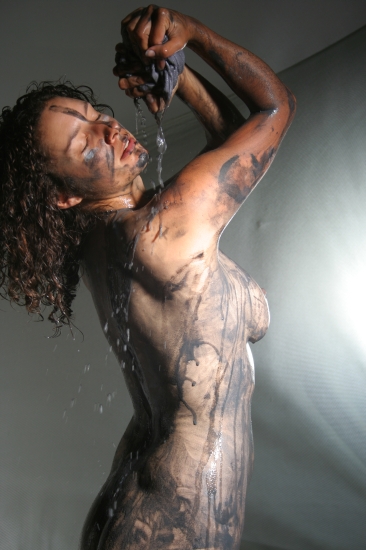the 180mag
editor's blog
"Anyone who listens to an artist needs their eyes examined" -Claus Oldenburg
"Anyone who listens to an artist needs their eyes examined" -Claus Oldenburg
send us an email
You can track this page with firefox add-ons
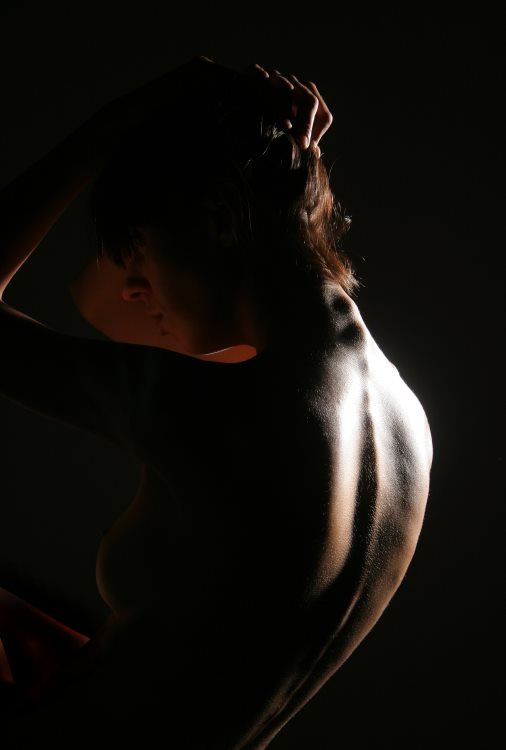
Sometimes you have to go with the classics - Kim Taylor
I was asked yesterday why I am so bad at promoting my work. I have been trying to answer that one for a while now, and I think it may be a bit more complex than "I don't have time".
I don't have time of course, to make a living at photography you need to spend about 80 percent of your time promoting yourself. I'd rather spend 100 percent of that time doing photography. And that statement was the key that unlocked the door.
I'd rather be shooting than promoting, than editing, than printing, than framing, than talking about my work.
I'd rather be shooting.
Just as a great model gets into the moment of creation, and glories in creating something new, so I get into the moment of capturing that performance. More than that, I love the flow of light over a model, the sound of the camera, the conversation, the mutual discovery of a new angle.
I love the performance of shooting, and I think that's my art just as much as the performance of iaido is the core of my involvement with the martial arts. Writing about it, thinking about it, discussing it... all peripheral to the performance of iaido. Same for me with photography, it's the shoot that's the thing, not the end result.
So now you know why all the "straight from the camera" stuff. I don't really mind editing, the image above is edited, the legs were much too bright and I burned them down. I don't mind a classical shoot either, that's a lovely new model and a single light. Been done forever and should be done forever more by anyone who shoots nudes. It's the basis for everything else, lines and light.
As you read in my last post, I managed to trash my point and shoot so I now need to replace it. The new camera will cost somewhere around $400 plus tax so I need to raise some money.
Have a look at this section of my website which features my "20 straight" projects.
http://180degreeimaging.com/180taylor/index3.html
I will create a boxed set of 20 4x6 images for the first 10 people who pick a shoot and send me $50. You do not have to choose one of the 20 straight shoots, you can choose any shoot I've done that you find in my portfolio, or anywhere else. If you're really interested in a distinctive set of shots I'll even work with you to find what you want from my collections.
Don't be shy folks, I look forward to working with you on this.
Oh, and if someone wants to buy me the whole camera, I've got a couple of big archivally framed prints lying around the place we could discuss.
One to avoid
Here's the last straight shot my poor little Pentax W20 will ever take.
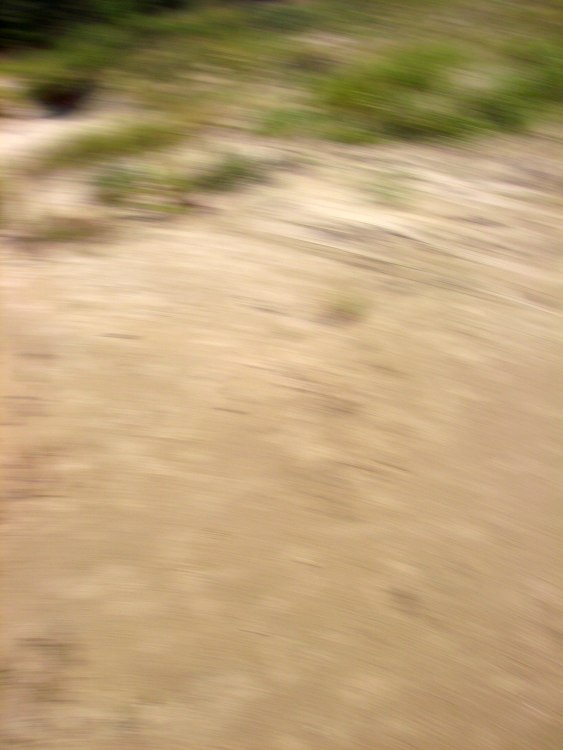
We were at Sauble Beach with the kids, lots of wind so we got the kites out of the car and put them up. I suppose I was a bit groggy but I thought it would be a great time to try a bit of aerial photography and I hooked the camera onto the tail of the kite.
Imagine taking a camera and throwing it, from about six feet high, into the ground as hard as you possible could. No scratch that, imagine tying it onto a piece of string and then whirling it into the ground.
This happened several times before I could get the camera back in my hands. I then... no I didn't quit... I then tied it to a different place on the tail and sent it up again.
To the same treatment.
Somewhere in there the images changed, from this one (which I like to think is the camera heading for the sand) to the next image here.
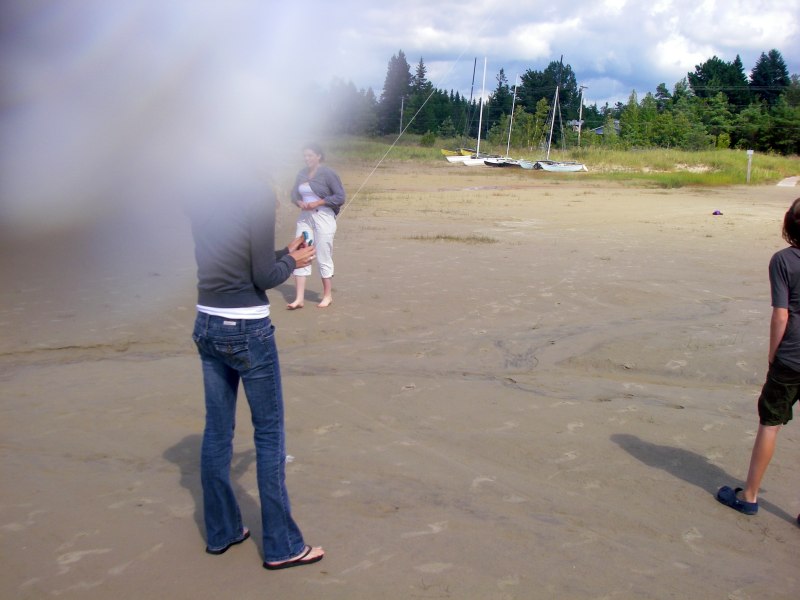
On close inspection of the camera I found that one of the internal glass elements in the image pathway (not sure if it's a mirror or some glass) is cracked.
No problem with the electronics or the zoom or anything else but the body whipping and flexing as it hit the wet packed sand caused a crack in the glass.
I'm impressed at how tough this thing is, and wish I hadn't worried so much when I dropped it on the grass or bumped it into a tree.
Now I can zoom out of the cracked region, but the lens flares something fierce when the light hits it from the side so I will likely keep using it at all zooms. It's now my own personal piece of junk camera and my next story in 180 is going to feature the W20 in its new incarnation.
The next time I try this I'm going to tie the camera somewhere down the line from the kite and quit being an idiot with the tail.
Shortly after this shot was taken Lauren dropped the string and it went bounding across the beach, over some power lines, across a road and into the back yard of a cottage where it caught on a tree about 10 feet up. With Lauren on my shoulders the kite was rescued.
Yow, sorry for not posting more, I've got a bunch of things I want to talk about but no time to write.
Was just doing a story for 180 and thought I'd tell the big secret of how I did it. Here's the opening shot:
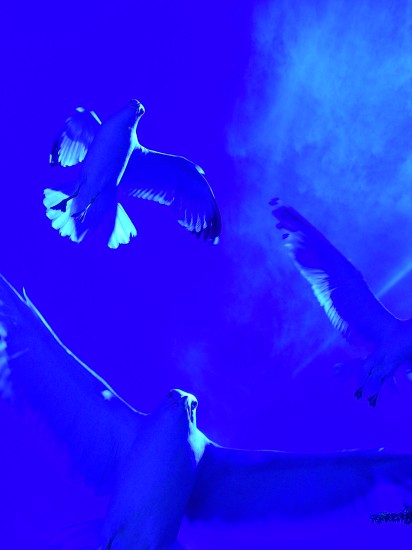
This is straight from the camera, resized and that's it. It was done on my Pentax W20.
The first and most critical thing I did was to set a custom white balance on the back of the half size guitar you see in this photo:
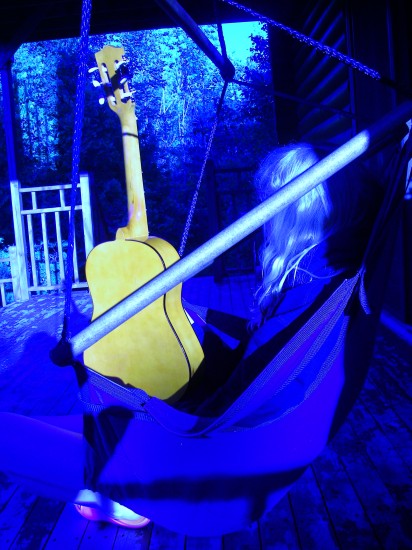
It was in full mid-day sun and I don't think the camera could quite get it to white. The rest of the adjustments might have been to bump up the contrast, saturation and sharpness to their highest levels. Oops no I checked the Exif info and I bumped the saturation and contrast but took the sharpness down to minimum. ISO was set to 64.
The rest is simply shooting hand held using a secret recipe for enticing the seagulls to the camera...
OK it's potato wedges on a public beach, hold them over your head and you'll have lots of crazed looking birds within a couple inches of your camera. Blast away and sort through it all at the end of the day.
Here's the address for a sneak peek of the whole story http://180mag.ca/0808/taylor/taylor.html
I'm not talking about folks posing for you but the model by which you work. What are the rules you live by.
Everyone has rules, and it may be instructive to set yours down. If nothing else, you might jog your world by changing one of those rules and seeing where that takes you.
These rules are also used, and useful, for criticism of any art, including photography. The history of western art is largely a search to categorize. With an understanding of where an artist fits, it's easier to look for the influences and the influence, for what created the artist's vision and how he changed those who came after him. This hasn't been done very rigorously in photography but it could be quite useful to the critic.
Let's see what we can do to help define what you do.
Looking at what constitutes criticism in the various photography forums around the net, and comparing to the more academic side of things I'd say the very first split should be Artistic vs Technical. Is your orientation more toward what you say or how you say it?
This isn't something new by the way, one of the first big "splits" in the photography world was the formation of the Linked Ring by Henry Peach Robinson and others in 1892 in a protest over the scientific, technical focus of the Photographic Society.
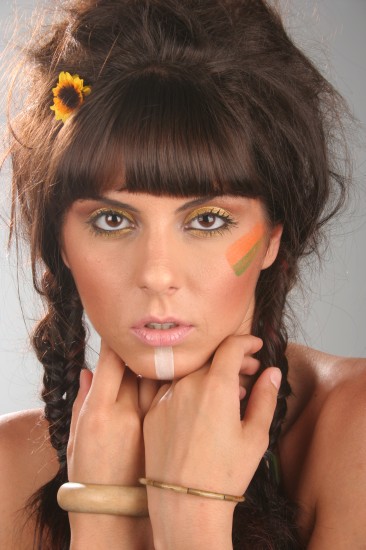
Channeling Barbara Feldon...
People - yes
Type - Portrait
Straight - yes
Arranged - yes
Post processing - no
Makeup and hair - yes
Lighting - soft
Hair light - yes
Sensor - largish, 35mm
Artistic decisions:
People, places or things?
Are you a landscapist or a portraitist? Trees or Tots? Or do you photograph animals? One of the first ways to start your analysis of what it is you do is to take a look at what it is you photograph. Photography includes just about every subject you could think of from still life to pure abstraction.
Once you know what you photograph you can examine the way you photograph it. Are you more commercial or fine art? Are you a documentarian? A photojournalist or a family archivist? A shot to preserve the fifth birthday of your daughter will likely be different than a shot of the latest boy-band for the record company, even if the poses may have some similarity.
Pictorialism or Straight Photography?
After the Linked Ring and the Photo-Succession came another split as photographers and groups such as the rather short-lived f64 moved back toward a more technical orientation. A desire to shoot "what is there" in sharp, deep focus and long tonal ranges. This was in opposition to the soft focus, romantic tableau of pictorialism.
This basic opposition has existed forever in photography and other visual arts, it's the Realists vs the Illusionists, Impressionists, Expressionists, and the Abstractionists. Those who paint what they see vs those who paint what they feel. Today the split in photography is being fought over digital editing, with the fantasists on one side using programs such as Photoshop to manipulate their images and the Journalists on the other who don't dare even hint that they have manipulated their shots.
Arranged or found?
Even for those who don't use a lot of digital editing the question of realism comes up. Think of the street photography of Jeff Wall vs Garry Winogrand. The re-documentation with actors of something seen on the street vs the snap-shot capturing of life as it is hunted down.
This can also be looked at as the "Run and Gun" folks who shoot fast and often vs the careful composition folks who take only a few shots. The kind of shooting you do can be influenced by the equipment you use, or perhaps the style of shooting dictates the equipment. Think about the way you can use a 35mm camera compared to an 8x10 view camera, or perhaps that view camera along with wet plate collodian technology. There are many more artistic or conceptual considerations but perhaps this link between shooting choice and equipment is a good place to move to the technical decisions.
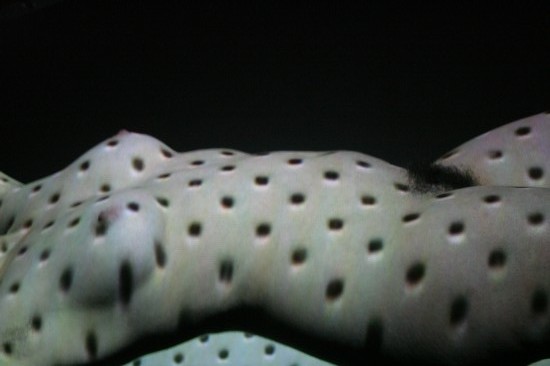
Holey Woman...
People - yes
Type - Abstract
Straight - yes
Arranged - yes
Post processing - no
Makeup and hair - no
Lighting - projector
Sensor - largish, 35mm
Technical decisions:
Digital or film?
Maybe the key technical decision of the last 5-10 years has been digital or film. While it may seem to be traumatic, these choices have been with us forever. Does one use the Daguerreotype for it's amazing detail or the Callotype for it's softer focus but it's paper negative?
Wet or dry plate? Glass plate or roll film? Remember that the medium will dictate how fast and how much you can shoot. The technical progress of photography has been a long search for faster media and larger numbers of shots. From the minutes long process of the Daguerreotype to the 1200 frames per second Casio the media and the lenses have been manipulated toward portability, speed and storage.
If you do choose digital, do you work in Jpeg or Raw? The choice here can affect archival storage (jpeg shots are likely to be readable long after many raw formats are forgotten) and will depend a lot on how much post processing you do.
Post process or not?
What about post processing? If you work in colour film you likely don't do much post processing at all. If you shoot black and white you have likely taken a shot at developing and printing with all the darkroom tricks associated with that technology, but if you work in digital you can spend hours at the computer producing anything you want. With greater possibilities comes an even greater decision about editing or not.
Point and shoot, 35mm, medium format?
Again, even if you choose digital you have format choices, from the tiny sensors in the point and shoot cameras to the medium format megapixel monsters. Each sensor size will give distinct characteristics to the images produced. Such things as the dynamic range, the colour characteristics, the noise and the resolution will change for each sensor in each size range. The technophile may go for the best of each while another artist may like the look of high noise and contrast combined with limited dynamic range of a point and shoot.
Lens choice?
There are literally thousands of technical choices which all have an effect on the final image. Perhaps one more to talk about here is the lens choice. The difference to a headshot when using a wide angle as compared to a telephoto lens should be obvious to most photographers. Certain looks come in and out of style, as for instance the change from telephoto to wide angle in the fashion world over the last 20 years. In the '70s it was the "normal" fast lens that was the workhorse. I remember my Pentax 50mm f1.4 with great fondness.
Photographic lenses may also influence other visual arts. It has been suggested that the difference between Goya's "Third of May 1808" and Edouard Manet's "execution of Emperor Maximillian" is the influence of telephoto lenses on Manet. Similarly, Vermeer's use of soft focus in the foreground of some of his images is said to be an influence of the depth of field effects of the camera obscura that was in use at the time he was painting.
I think perhaps we can leave this discussion here, one can expand these rules as required to fit one's own shooting style. As we can see, these definitions and rules can be applied even to those who claim to "shoot everything" since nobody could actually use the whole range of equipment and artistic choice available to photography today.
So go forth and make your list of rules.
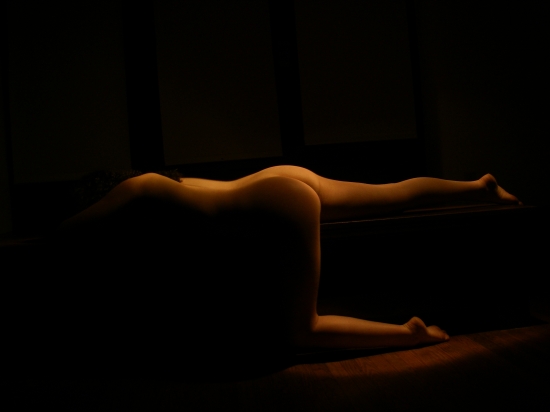
I'm always interested in just what you can do with what you've got. In fact most of my more interesting shots are done with improvised equipment of some type.
I was away from the studio a few days ago but suddenly got the desire to do some light painting. I had my point and shoot (Pentax w20) and a small flashlight along with me.
Hunting around the various settings and doing a little bit of playing I found that the night setting would give me a four second exposure so here's how I set it up.
night setting
no flash
auto white balance (no choice)
iso 64
pan focus (fixed focus mode)
2 second timer
pocket tripod
Aim the camera, hit the shutter, walk two steps and sweep the flashlight over the model, repeat until model gets bored or tired.
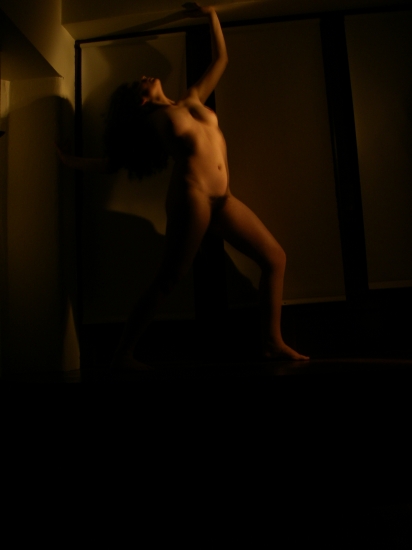
I am not sure exactly how useful my normal attitude to my skills is, but I'm pretty sure that it keeps me learning at least.
I have just come off of two major iaido seminars and so have done little in the way of photography for a while, hence the time between posts.
Today I was in the studio once more, and as usual, was wondering if I still "had it". Could I still create a photograph that I liked?
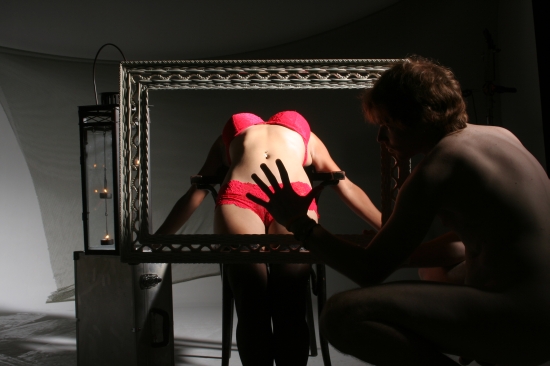
This after starting my photographic journey at the age of 6 or 7, which would mean around 45 years ago.
You'd think I would have the confidence that I could get a shot wouldn't you?
But I feel the same about the iaido. I first began the martial arts 28 years ago, yet each time I get on the floor or in front of a class I wonder if I can demonstrate a technique or say something that will help someone else. It's called the imposter syndrome or the fraud syndrome and it's not that uncommon.
The thing is, mine exists right beside a healthy dose of "no problem, I can do that". I have no trouble at all standing in front of folks and pontificating on the meaning of life, art and whatever else I'm supposed to be an expert on.
It makes for a weird mixture and my solution is not to think about it too much. Just carry on doing what I do and keep trying to match the perceived ability with the ego. Like I said, it seems to promote the effort to improve each and every time I create a photograph or swing a sword.
